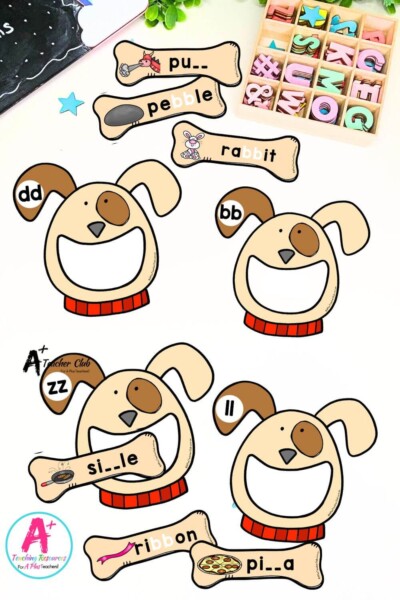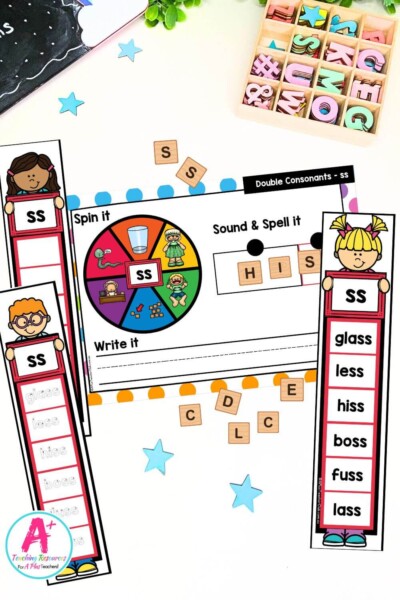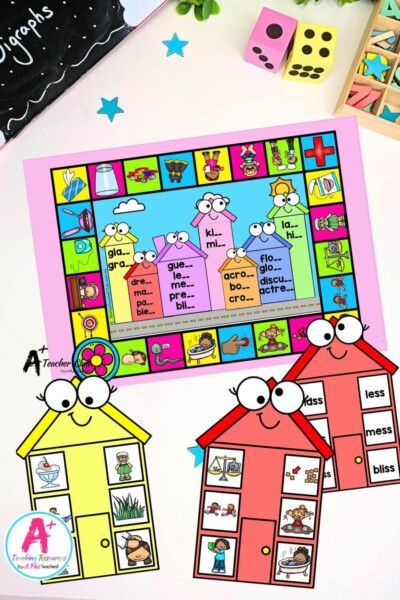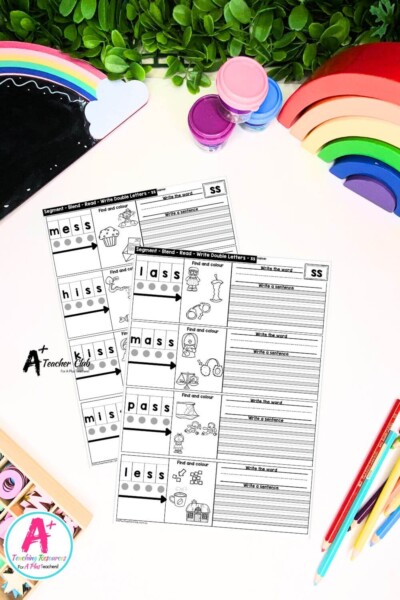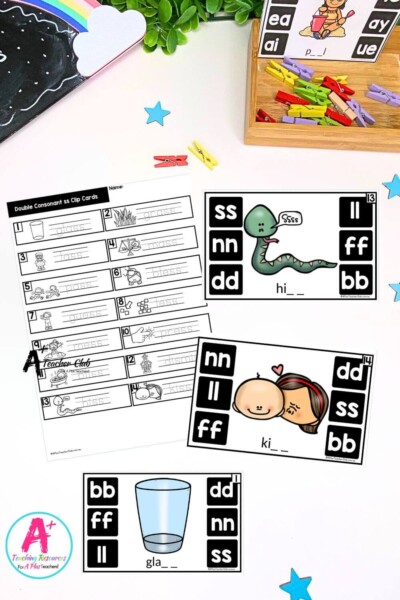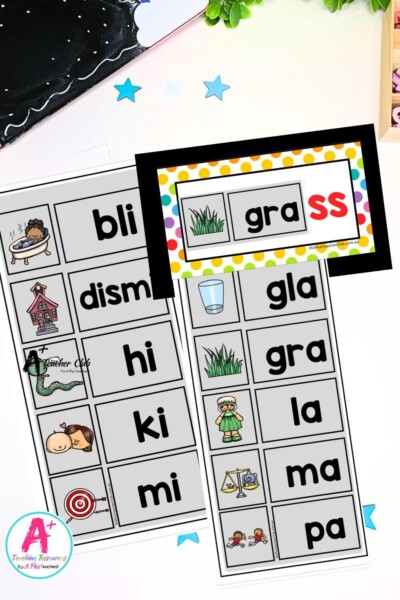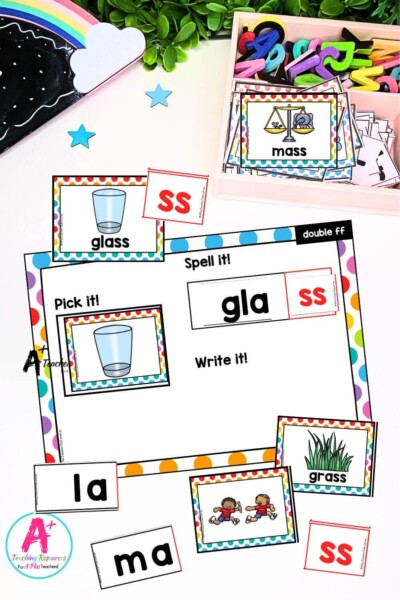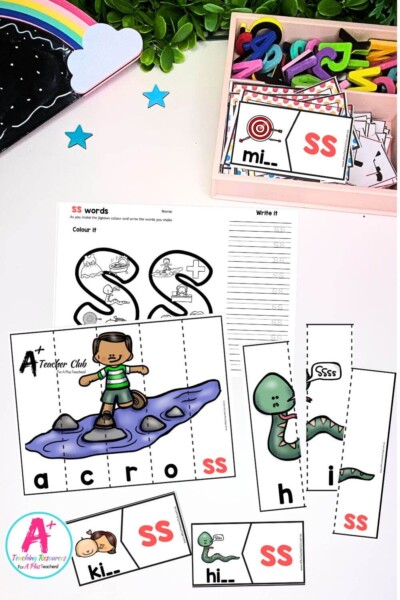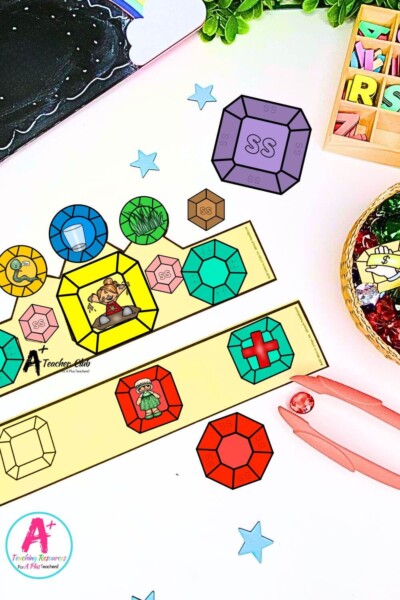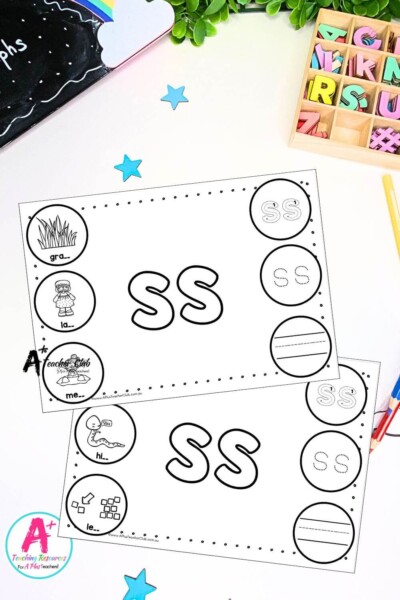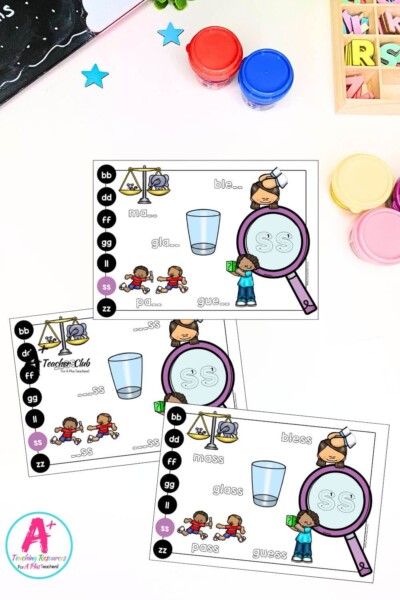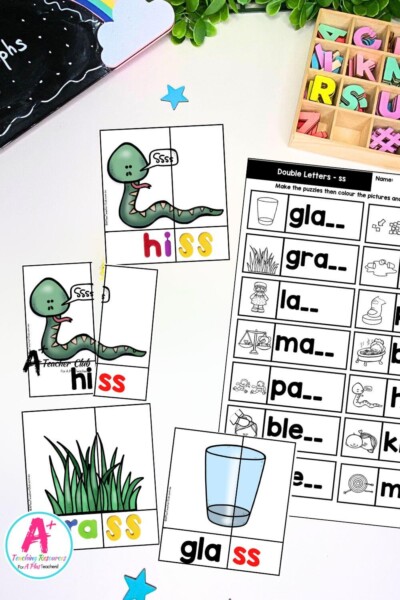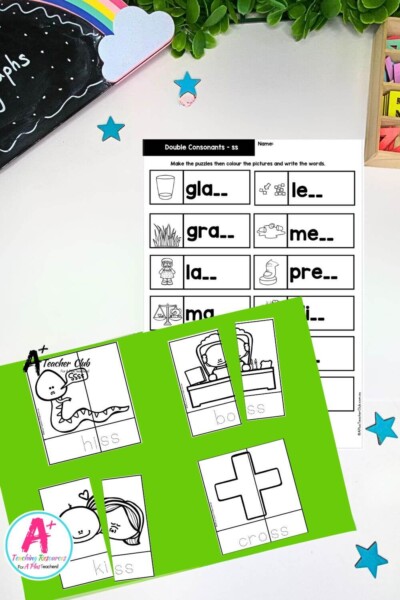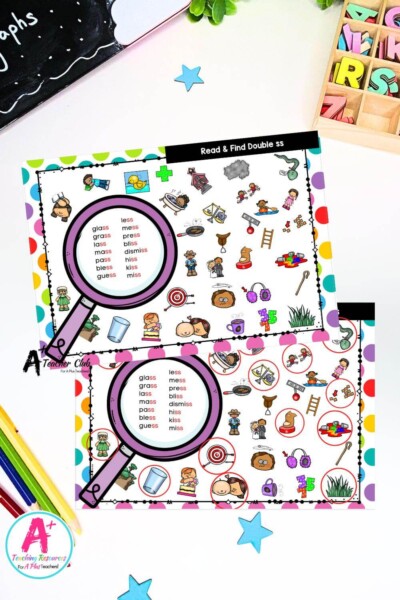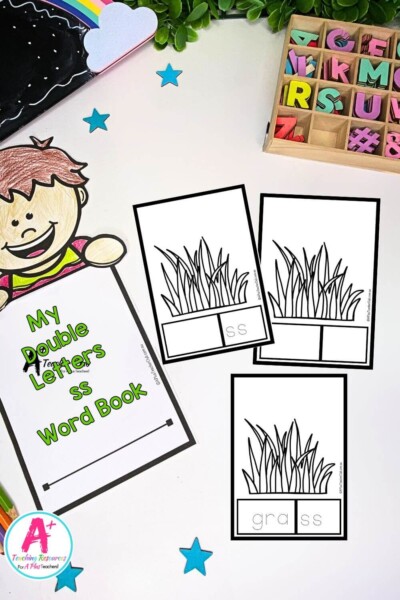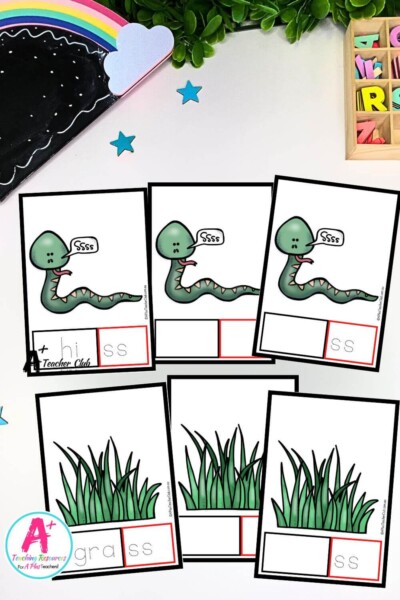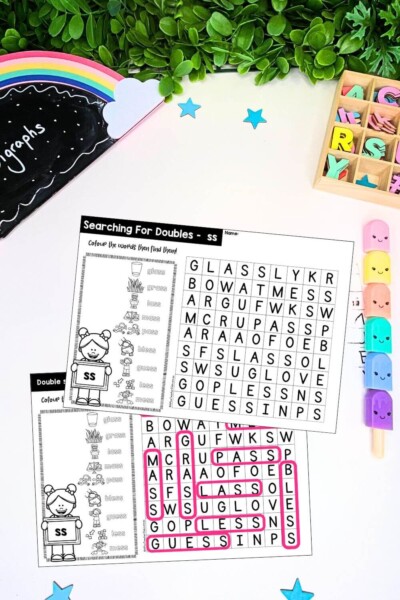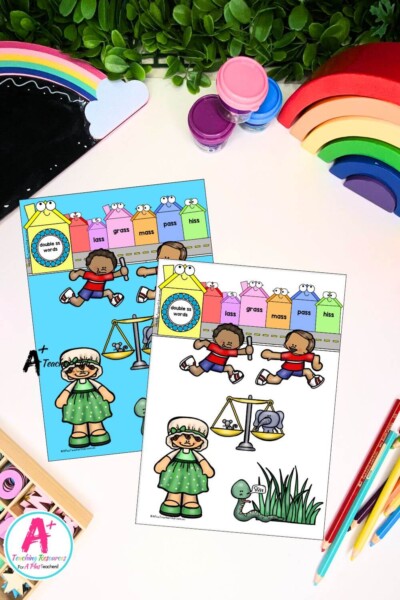Teaching Double Consonants “ss”
Phonics, Spelling, & Grammar Resources
Teaching spelling and phonics can be challenging, especially when it comes to Teaching Double Consonants “ss” Rules. However, understanding this rule is crucial for students to develop strong spelling skills. In this comprehensive guide, we’ll explore the ins and outs of the double “ss” consonant rule, provide examples, and address common issues and confusions students may encounter. You’ll also find a stack of fun and engaging resources to help your learners master double consonants as well as handy hints and info for Teaching Double Consonants.
The Double “ss” Consonant Rule FLOSS Rule
Using spelling rules is a great way for students to learn when to use double letters in their spelling and writing and there are two to teach them about when and how to use double “ss” in words; the FLOSS Rule and the Double Consonant ‘ss’ Rule.
Knowing when to use double “ss” at the end of a word comes down to understanding certain spelling rules:
After a Short Vowel Sound:
- In one-syllable words, double the final consonant if the word has a short vowel sound and ends in a single “s.”
- Example: “kiss” → “kissing” (short vowel sound “i”)
When Adding Suffixes:
- Double the final consonant before adding a suffix if the word has a short vowel sound and ends in a single “s.”
- Example: “pass” → “passing” (short vowel sound “a”)
To Distinguish Between Words:
- Double the consonant to distinguish between similar words or to clarify meaning.
- Example: “dessert” (a sweet course) vs. “desert” (a dry, sandy area)
The FLOSS Rule is an easier way to help students know when to double a consonant. FLOSS is a mnemonic used to remember when to double the final consonant at the end of one-syllable words after a short vowel sound.
The rule is that in one-syllable words, if a vowel is immediately followed by “f,” “l,” “s,” or sometimes “z,” you double the final consonant. This helps keep the vowel short and the pronunciation clear.
Take the word “kiss” for instance. We double the “s” because the vowel “i” is immediately followed by “s.” Without the double “s,” the word would be pronounced differently. So, the double “ss” helps us spell words in a way that matches their pronunciation and maintains consistency in English spelling.
So now let’s talk about the Final Double “ss” Consonant Rule. It’s pretty straightforward, actually. If you’ve got a word that already ends in a double “ss” and you want to add on something like “-ed” or “-ing,” you don’t need to change a thing!
For example, let’s take the word “miss.” If we want to describe something that happened in the past, we add “-ed” to get “missed.” And if we want to talk about someone currently experiencing the action, we simply add “-ing” to get “missing.” In both cases, the double “ss” remains unchanged, following the Final Double “ss” Consonant Rule.
Double Consonant “ss” Word List
“ss” Words Used in our Resources
Common Issues and Confusions
Students may encounter several confusions and issues when learning about the double “ss” rule:
- Overgeneralisation: Sometimes, students may incorrectly apply the rule to words that don’t follow it, leading to misspellings. For example, they might mistakenly double the “s” in words like “possess” or “assume,” where the double “s” is not required.
- Phonetic Awareness: Students may struggle with recognizing when a word has a short vowel sound followed by a single “s,” which necessitates doubling the consonant. This lack of phonetic awareness can lead to difficulties in applying the rule accurately.
- Exception Words: Certain words, despite having a short vowel sound followed by a single “s,” do not follow the double “ss” rule. Examples include “fuss,” “gross,” and “bless.” Remembering these exceptions can be challenging for students.
- Homophones: Homophones are words that sound alike but have different meanings and spellings. Students may confuse words like “dessert” (a sweet course) and “desert” (a dry, sandy area) due to their similar pronunciation, leading to spelling errors.
To overcome these challenges, teachers can provide ample practice opportunities, reinforce the rule through engaging activities, and encourage students to develop phonemic awareness to identify short vowel sounds and single consonants accurately. Additionally, highlighting exception words and teaching mnemonic devices can aid in memorisation and reinforce understanding.
Resources listed in this collection
Click to jump to...-
Double Consonants Feed Me Dogs
-
Double Consonant Spin & Spell - ss
-
Double Consonant Board Game - ss
-
Double Consonant Worksheets - ss
-
Double Consonant Clip Cards - ss
-
Double Consonant Strip Reader - ss
-
Double Consonant Word Builder - ss
-
Double Consonant Strip Puzzles - ss
-
Double Consonant Crown Craft - ss
-
Double Consonant Writing Mats - ss
-
Double Consonant Playdough Mats - ss
-
Double Consonant Colour 2 Piece Puzzles - ss
-
Double Consonant B&W 2 Piece Puzzles - ss
-
Double Consonant I Spy Read & Find - ss
-
Double Consonant Student Book - ss
-
Double Consonant Flash Cards - ss
-
Double Consonant Word Search - ss
-
Double Consonant Posters - ss
Double ss Activities
Explore tags
More Double Consonant Activities
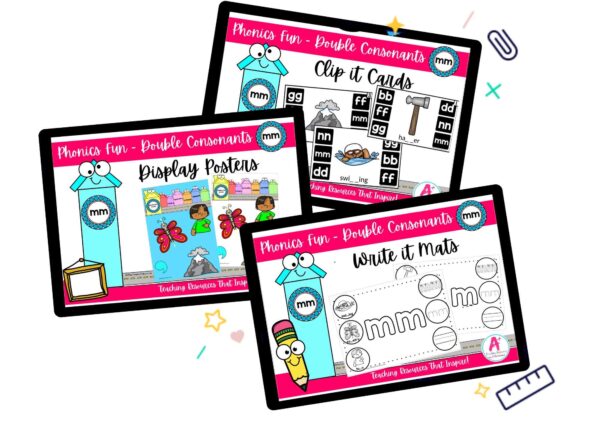
Double Consonants - mm
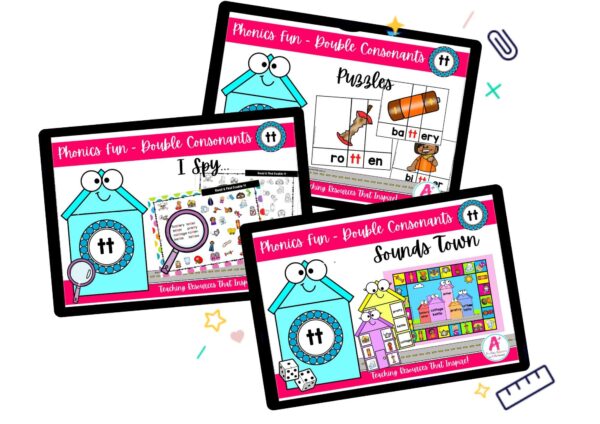
Double Consonants - tt
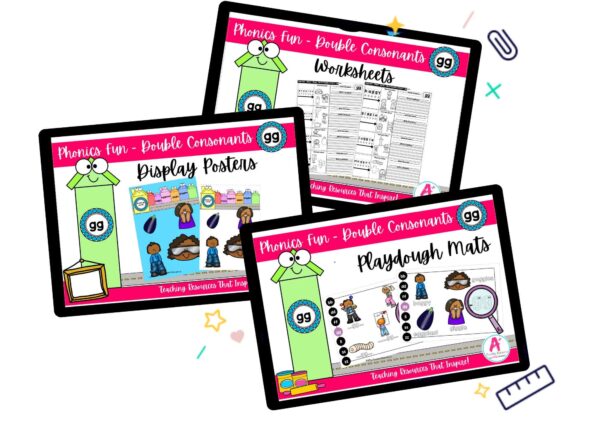
Double Consonants - gg
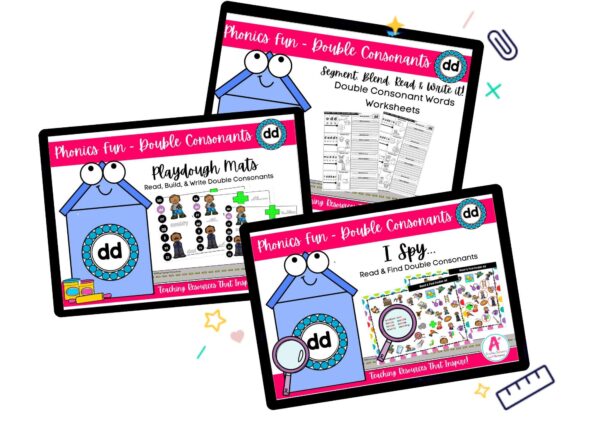
Double Consonants - dd
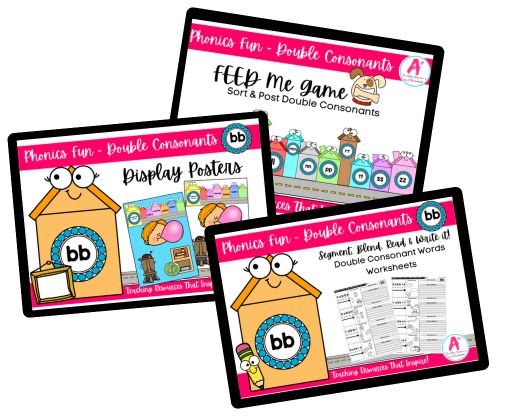
Double Consonants - bb
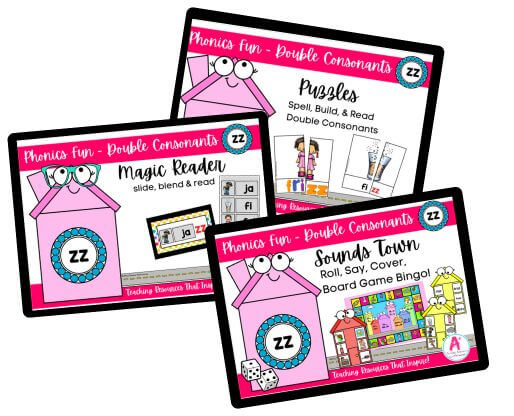
Double Consonants - zz
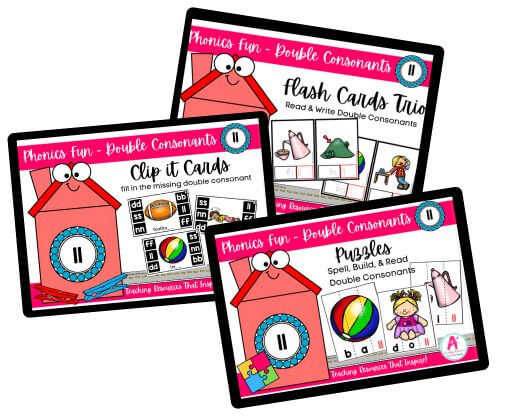
Double Consonant - ll
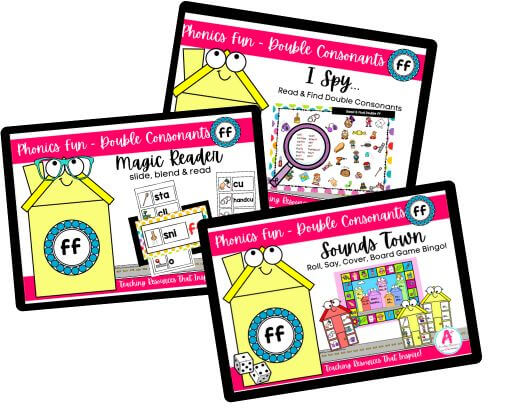
Double Consonants - ff
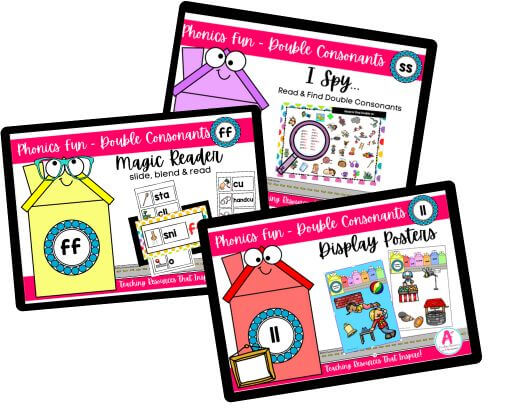
Double Consonants Collections
Can't find what you're looking for?
Send us a request! Use this form to request a resource. Please give details of the learning area, topic, year level, curriculum links. We’ll be happy to take a look to see if we can fit it in. Unfortunately a request does not guarantee we will be able to make it!
"*" indicates required fields

